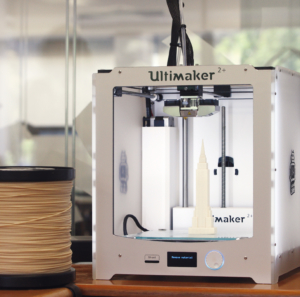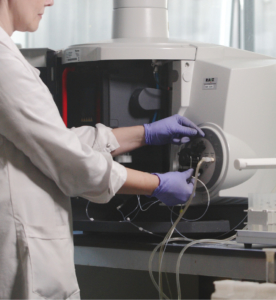“The Navigator 4.0 project grew out of the need to have a group of people to come together periodically and take decisions about future initiatives”, explained Ricardo Jorge, the coordinator of the initiative.
In view of the fact that, with the transition to Industry 4.0, the different areas will be more interconnected, with greater transparency and fluidity in information, one of the first decisions was to create a multidisciplinary team. “We have a group that is monitoring initiatives and includes people from the industrial division through to supply chain, including forestry and even talent management. We’ve already implemented a number of initiatives. Some have gone well, others less well, but that’s just part of the process of using this type of approach. There’s no pre-set formula, sometimes you just have to try things out,” explained Ricardo Jorge.
One of the areas where Industry 4.0 has moved from discussions into practice is in data analysis, one of the crucial areas for the pulp and paper industry to make a successful transition to 4.0. The new tools are up and running at the Company’s industrial units.
The first to be launched, in 2014, were the data mining tools, with encouraging results. “There have been clear gains, both in terms of process stability, with troubleshooting, and in optimising raw material consumption – in the use of chemicals, for instance – and productivity gains,” Ricardo Jorge told us, adding that the tools and technologies selected have been those with the greatest potential, both from the point of view of learning and of the results to be achieved in the short and medium term.
In the meantime, process optimisation tools have been installed at the Cacia and Setúbal pulp mills, designed to test another type of method for data processing and analysis.
In the realm of intelligence
Another two key areas in this transition are the use of smart equipment and the design of intelligent products. The projects here are still mostly just ideas in the air. “We have planned to test several technologies for smart wireless sensors, to monitor the state of equipment, in particular vibrations and temperature, and we’re looking into developing a number of dedicated solutions, in the field of robotics,” Ricardo Jorge told us.
In the case of smart products, a number of projects are under consideration with the aim of creating new functions for paper by using electronics. It was the case of a partnership with CENIMAT, at the Faculty of Science and Technology at Universidade Nova, that consisted of using paper as the base for printing electronic circuits.

For Ricardo Jorge, opportunities and benefits could potentially exist throughout Navigator’s value chain, in the medium and long term, from gains in efficiency and reductions in waste and error rates. “In principle, the pulp, paper and energy production sectors, maintenance, procurement and logistics, both inbound and outbound, all fit the profile and use resources where traditionally the benefits to be obtained will be easier to pinpoint and achieve,” he told us. Work has been proceeding with a number of firms in the technology sector, to test out a series of concepts.
More real is the cooperation agreement with the Higher Technical Institute, with a duration of three years, in which Industry 4.0 is the central topic and where there will be room to develop new solutions.
Transparency in real time

Inevitably, the transition to 4.0 will bring changes to the way the pulp and paper industry functions, in particular to its relationship with the supply chain and consumers themselves. “The industry will start to interact in a more transparent way, and in real time, with its supplier and customer base. For instance, suppliers will be able to have real time access to stocks of the raw and subsidiary materials they supply, and react automatically depending on the level of those stocks. This reduces the likelihood of stocks running out and also paves the way for optimising minimum stocks. As for customers, they could for instance have real time access to the state of their orders, from production through to delivery,” we heard from the project coordinator.
Natural resources could also benefit in future from more sustainable and efficient management. “In the first place, from more efficient use of those resources, thanks to the opportunities presented by these new tools for optimising processes. At the same time, because real-time monitoring of those natural resources and the environment in which they are located could enable us in some cases to optimise yields, such as in the case of forests,” Ricardo Jorge explained, looking ahead to the possible future use of sensors which could assess both the water stress experienced by each tree and best time to fell it. “There’s a series of ideas which could be implemented in future”, he told us.
All this is set to revolutionise the pulp and paper industry in just a few decades. When we asked Ricardo Jorge to envisage a mill in 35 years’ time, the picture he painted was futuristic: “We can expect that rapid development of artificial intelligence tools, autonomous mobility solutions and robotics will transform not just this industrial sector, but industry as a whole. By implementing what these tools will be in the future, we anticipate that we’ll be moving towards autonomous factories, where pieces of equipment react with each other, and are able to take decisions on their own, with predictive and auto-learning capabilities, supervised by humans.” This future has already started.
The origins of industry 4.0
The term Industry 4.0 was first coined in 2011, in Hannover, in the light of a series of measures adopted by the German government to promote increased automation in industry.

The principles that it advocates, such as real time operational capacity, virtualisation and decentralisation, and the pillars on which it is supported, such as safety, the internet of things and big data analytics, meant that it has been viewed as a new industrial revolution.
This new way of thinking about and managing industry will give rise to new business models, in an increasingly automated world, with growing opportunities in R&D, where the transparency and fluidity of information and ever-greater product and service customisation will be the central themes.
With the transition to Industry 4.0, the different areas will be more interconnected, with greater transparency and fluidity in information.